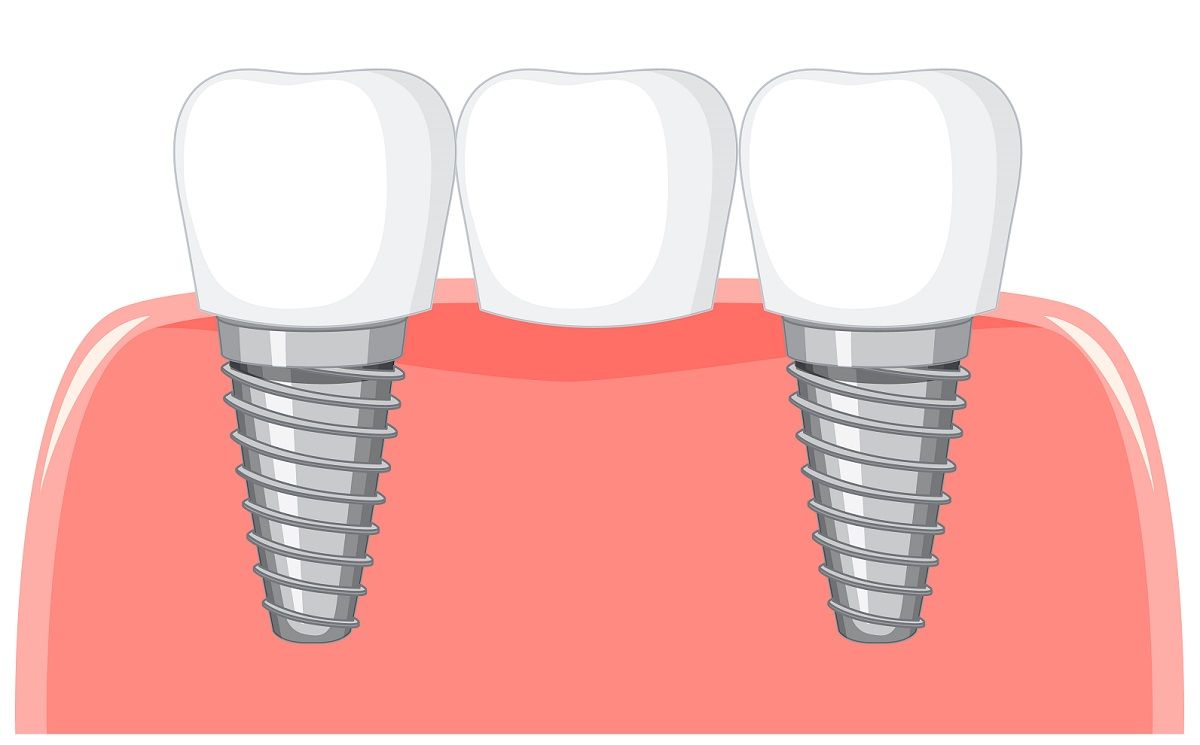

Dental bridge (False teeth): Types, benefits, and cost
Your dentist may recommend dental bridges if you have missing teeth to repair the gaps in your smile. A dental bridge is an artificial tooth, also known as false teeth, kept in place by the abutment teeth on each side of the gap. False teeth can be constructed of various materials, including gold, although it commonly comes in materials like porcelain to blend in with your natural teeth.
Why do I need a dental bridge?
If you Lose a tooth, neighboring teeth may shift into the empty area because teeth work together. Your opposing jaw's teeth can also slide up and down toward the space. This can result in the following:
- Bite issues
- Difficulties chewing
- Pain due to the additional strain on your teeth and jaw
- Self-consciousness about your appearance or your smile
Furthermore, the most common reasons for tooth loss include tooth decay, gum disease, and injury. Congenital illness is one of the causes of missing teeth. A dental bridge necessitates the presence of healthy teeth on both sides of the missing teeth. Therefore, false teeth can be beneficial if you have a lost tooth or teeth.
Dental Bridge Types
- Conventional dental bridge
A conventional dental bridge is held in place by dental crowns cemented onto each abutment tooth. Moreover, a conventional dental bridge is the most common type, which dentists use when you have a gap between your natural teeth because of your missing tooth.
- Cantilever dental bridge
Like a regular bridge, a cantilever dental bridge is kept in place by a dental crown glued to only one abutment tooth. A cantilever bridge requires only one natural tooth adjacent to the missing tooth gap.
- Maryland dental bridge
Maryland dental bridges, like traditional bridges, are supported by two natural abutment teeth, one on each side of the gap. On the other hand, a conventional bridge employs dental crowns on the abutment teeth. In contrast, this dental bridge uses a metal or porcelain framework attached to the backs of the abutment teeth.
Like a regular bridge, dentists use a Maryland bridge if you have a gap between your natural teeth because of a lost tooth or teeth.
- Implant-supported bridges
As the name implies, implant-supported bridges are supported by dental implants rather than crowns or frames. One implant is surgically implanted for each missing tooth, holding the bridge in place. If one implant for each lost tooth is not workable, dentists may use a false tooth suspended between two implant-supported crowns.
An implant-supported bridge, considered the most robust and most stable device, typically needs two surgeries:
- one for implanting the implants in the jawbone
- a second procedure to put the bridge in place
Furthermore, it can take many months to complete the treatment.

How much does a dental bridge cost?
Numerous factors can influence the pricing, including:
- Type of dental bridge that you choose.
- The number of teeth that require filling.
- You choose materials such as composite resin, zirconia, or metal alloy.
- Placement complexity/difficulty.
- Further dental treatments for conditions such as gum disease.
What are the benefits and complications of dental bridges?
A dental bridge can help with the following:
- Corrects your bite.
- It keeps the remaining teeth from shifting out of place.
- Restores your chewing and speaking abilities.
- Restores your smile.
If you properly maintain your bridge, it can last for many years without causing problems. The bridge may fail if the surrounding teeth decay or the cement deteriorates. If the bridge becomes loose while the supporting teeth stay healthy and intact, your provider may be able to reattach it with new glue.
How to care for your dental bridge?
The dental bridge's success depends on the remaining teeth' health and strength. Moreover, it's especially vital with a bridge to avoid tooth decay and gum disease, which can lead to tooth loss. You can do the following practices for healthy teeth and gum care:
- Brush twice a day and floss once daily: A dental professional can show you how to brush and floss properly. You will most likely utilize a threader floss, which allows you to glide the floss between the bridge and your gum.
- Get routine professional cleaning: Seeing a dentist can help detect issues early, making the treatment more successful.
- Eat a well-balanced diet: It is essential to include plenty of fruits, vegetables, and fiber while limiting chewy, fibrous items such as some meats.
Therefore, consult your dentist for a check-up if you detect changes in your bite or if eating becomes painful. Similarly, contact your healthcare practitioner if you experience pain, redness, swelling, or bleeding near the bridge.
Conclusion
Missing teeth can affect how you eat, speak, and smile. Furthermore, a dental bridge can improve the appearance and function of your mouth. Dental bridges repair the gap left by missing teeth and have a long lifespan. Consult your doctor to see if a dental bridge is correct. Maintain good oral hygiene and schedule frequent cleanings with your dentist.
Contact your Lafayette dentist, Dr. Massood Darvishzadeh, DDS at Lafayette Dental Group, to know more about dental bridges.
Resource:
*This media/content or any other on this website does not prescribe, recommend, or prevent any treatment or procedure. Therefore, we highly recommend that you get the advice of a qualified dentist or other medical practitioners regarding your specific dental condition*
Services
Contact Us
3466 Mt Diablo Blvd., Suite C207
Lafayette, CA 94549
2026 © Lafayette Dental Group | All rights reserved | Powered by: Vigorant, Inc.
